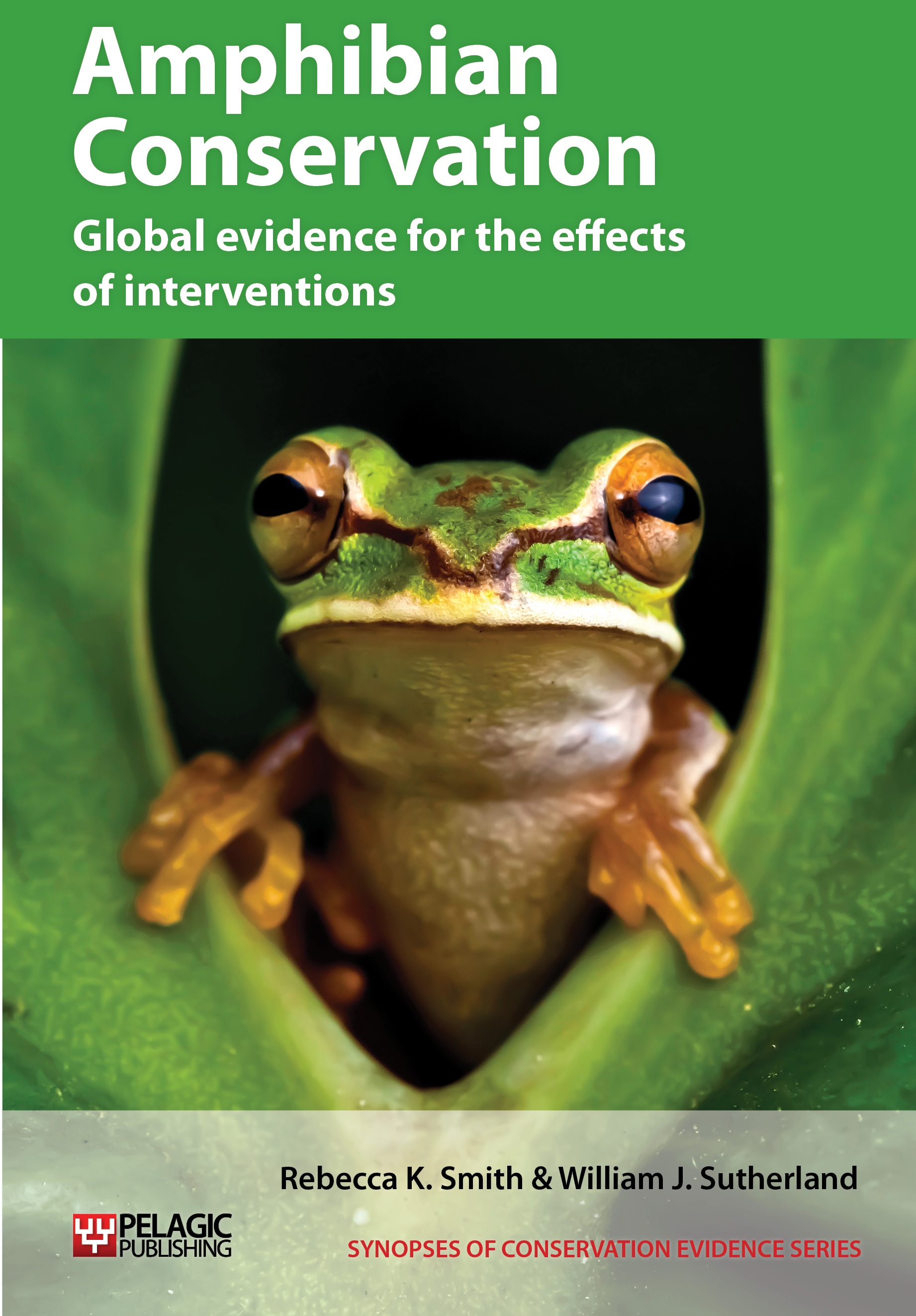Captive breeding Mallorcan midwife toads
-
Overall effectiveness category Trade-off between benefit and harms
-
Number of studies: 3
View assessment score
Hide assessment score
How is the evidence assessed?
-
Effectiveness
69% -
Certainty
55% -
Harms
40%
Study locations
Supporting evidence from individual studies
A replicated study in 1985–1988 of Mallorcan midwife toads Alytes muletensis at Jersey Zoo, UK (Tonge & Bloxam 1989) found that toads bred successfully in captivity. No breeding occurred in the first two years. However, in the third year, 17 egg clutches were produced, with an average of 12 eggs (range: 9–15). Three clutches dropped by the males were not successfully maintained artificially. Most eggs hatched and the first six clutches had metamorphosed by October 1988. The average survival to metamorphosis of those clutches was 85% (range: 22–100%). From 1985, six to 14 toads were housed in two glass tanks (1 x 0.6 x 1 m) in an unheated room (7–30°C). Tanks contained rocks, branches, tiles and a small pond and were misted to prevent drying. In April 1988, six toads were moved to an outdoor tank (5–12°C), but were returned indoors in May. Tadpoles and toadlets were reared in separate tanks.
Study and other actions testedA replicated study in 1997–1999 of Mallorcan midwife toads Alytes muletensis at Jersey Zoo, UK (Buley & Gonzalez-Villavicencio 2000 ) found that three captive populations bred successfully. In 1999, 40 clutches (433 eggs) were produced by the three breeding groups. Tadpoles hatched and reached metamorphosis. In 1997, 25 tadpoles were collected from each of three wild populations and were housed separately. Housing was in plastic tanks with gravel substrate, hides, water and simulated rainfall.
Study and other actions testedA randomized, replicated, controlled study of captive Mallorcan midwife toads Alytes muletensis in the UK (Kraaijeveld-Smit et al. 2006) found that there was a significant reduction in one predator defence trait (lower tail fin depth) in animals maintained in captivity for 9–12 compared to 1–2 generations. Long-term stock tadpoles also developed more slowly and had a significant loss of genetic variation. Tail length did not differ between populations. Forty tadpoles from a population captive-bred for 1–2 or for 9–12 generations (different ancestry) were divided between two treatments: chemical cues from viperine snakes or a control. Tadpoles were measured each 15 days. DNA was analysed.
Study and other actions tested
Where has this evidence come from?
List of journals searched by synopsis
All the journals searched for all synopses
This Action forms part of the Action Synopsis:
Amphibian Conservation
Amphibian Conservation - Published 2014
Amphibian Synopsis





)_2023.JPG)














